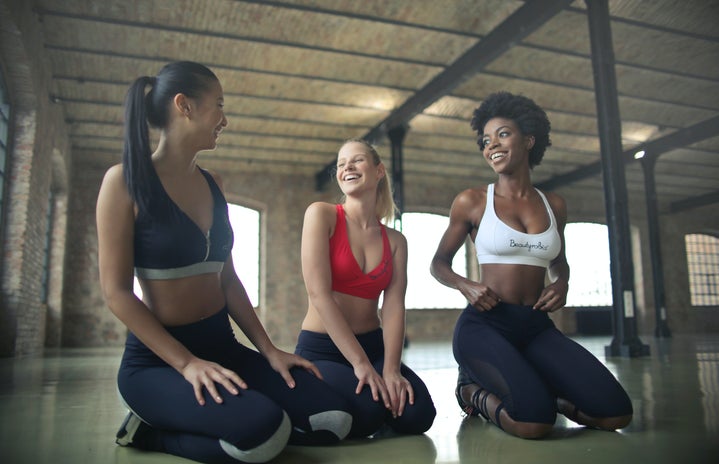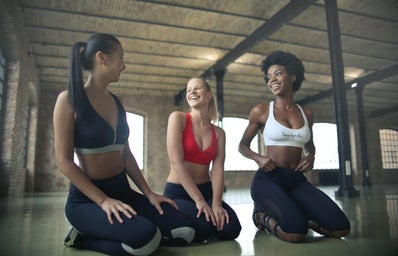The first time I went in a tanning bed was at the beginning of my junior year in high school. Everyone I knew was going somewhere warm for winter break, and I was stuck in sunless Chicago. I knew that when school resumed I would look beyond ghostly compared to everyone else, and because I hated the thought of that, I went tanning. After my first time, I found myself making numerous excuses as to why I should go again. Everything from homecoming and prom to bad breakouts or cold weather became an excuse to go tanning.
I knew that tanning was bad, but that didn’t stop me. I pushed the scary statistics into the very back of my mind and completely ignored what I was actually doing to my skin. I thought to myself, “Millions of people are doing it, why shouldn’t I?” It wasn’t until the very end of my senior year that my whole perspective changed.
A 22-year-old skin cancer survivor, Meghan Rothschild, came and spoke to my English class. At just 19 years old, Meghan was diagnosed with Stage 2 Melanoma. She was forced to go through painful mole removals and surgeries throughout her freshman year of college. I always thought of skin cancer as a sickness that middle-aged or elderly adults developed, not 20 year olds. Meghan was MY AGE when she was diagnosed. She made the idea of developing skin cancer more tangible and less of a possible side effect. Her story had a profound effect on me; I could no longer ignore the scary statistics.
Sadly, with the loss of the summer sun comes the loss of our summer glows. We wake up every morning and see our skin becoming paler and paler. As an ex-tanner, I totally understand why so many girls go tanning. But as someone who now knows the facts, I think it is important to make others aware. Here is the truth about tanning; you decide if being tan is worth the risk.
1. Many people say: “I only tan on special occasions, it’s not like I go every week!” And while it’s great that you don’t go every week, it doesn’t change the fact that what you’re doing is bad for your skin. People who use a tanning bed just SIX times are 73 percent more likely to develop basal cell carcinoma (a slow growing form of skin cancer).
2. The International Agency for Research on Cancer classifies Tanning Beds as a Class 1 Carcinogen. Fun fact: Agent Orange, a herbicide used by the U.S. Military during the Vietnam War, is only a Class 2 Carcinogen.
3. Indoor tanners are 74 percent more likely to develop melanoma than those who have never tanned indoors. Furthermore, those who tan indoors before the age of 35 increase their risk by 87 percent.
4. According to the American Cancer Society, Skin Cancer is the most common type of cancer in the U.S. More than 59,000 Americans are diagnosed with it each year, and about 7,000 Americans die from it each year.
5. From 1970-2009 the cases of melanoma increased by 800% for young women and 400% for young men. Melanoma is now the most common form of cancer for young adults ages 25 to 29.
6. Tanning beds put out 3-6 times the amount of radiation given off by the sun.
7. While tanning beds are a source of vitamin D, they are not the only alternative. In fact, they are the worst alternative. Vitamin D can be found in orange juice, milk and fish. If you can’t stand any of those three alternatives, you can always take supplements, like a daily vitamin. Last time I checked, a daily vitamin supplied me with vitamin D without increasing my risk of skin cancer.
8. The tanning industry claims that tanning beds are safer than the sun because they do not give off UVB rays (also known as burn rays.) However, many scientists have proved this false. UVA rays (the rays in tanning beds) are still linked to malignant melanoma and other types of skin cancers.
9. Melanoma rates are increasing faster than the rates of any other cancers.
10. Melanoma, if caught early, can be stopped from spreading—all it takes is a yearly exam by a dermatologist. However, there have been many cases where a cancerous mole has gone unnoticed or undiagnosed.
Giving up tanning beds does not necessarily mean you have to look albino all winter. There are many sunless tanners out there that won’t leave you looking like an Oompa Loompa. Some of the best on the market are Sevin Nyne, Clarins or St. Tropez. If you are shopping on a budget, try The Tan Towel or Jergens Natural Glow Moisturizer! These alternatives to tanning will leave you looking and feeling good WITHOUT dramatically increasing your risk of getting skin cancer.
So you decide, are tanning beds worth the risk to you?
Sources & Photo Credits
http://trendy-mom-fashion.blog…
http://www.skincancer.org/skin-cancer-information/skin-cancer-facts
http://www2.mdanderson.org/cancerwise/2009/09/tanning-beds-may-seem-safe-but-theyre-not.html
http://www.vanderbilt.edu/AnS/psychology/health_psychology/Tanning.html
http://www.skincarebeautyzone….

